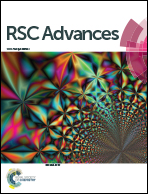Polyhedral cobaltadiselenaboranes: nido structures without bridging hydrogens†
Abstract
The lowest energy CpCoSe2Bn−3Hn−3 structures (8 ≤ n ≤ 12) have central CoSe2Bn−3 nido polyhedra derived from a closo or isocloso deltahedron by removal of a vertex. This leads to an “open” non-triangular face having four to six edges. The two selenium vertices in such structures are located on this open face reflecting the general preference of selenium for low degree vertices. The lowest energy 12-vertex CpCoSe2B9H9 structure has been synthesized and characterized structurally by X-ray crystallography. This structure can be derived from the regular icosahedron by removing two edges attached to the same vertex thereby leading to a bent pentagonal face containing both selenium atoms. For the 11-vertex CpCoSe2B8H8 system, all of the lowest energy structures within 15 kcal mol−1 are derived from the regular icosahedron by removal of a vertex. The two lowest energy 10-vertex CpCoSe2B7H7 structures have a framework similar to that of the known B10H14 with a bent hexagonal hole containing both selenium atoms. The seven lowest energy 9-vertex CpCoSe2B6H6 structures are derived from the bicapped tetragonal antiprism by removing either a degree 5 or degree 4 vertex giving pentagonal and tetragonal open faces, respectively. The latter process gives the capped tetragonal antiprism. Similarly, the lowest energy 8-vertex CpCoSe2B5H5 structures are derived from the tricapped trigonal prism by removing a degree 5 vertex to give a pentagonal open face.


 Please wait while we load your content...
Please wait while we load your content...